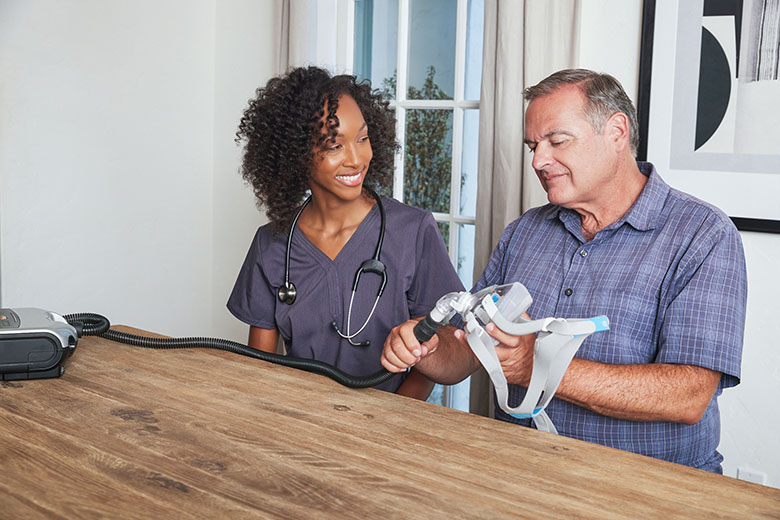Myth 1: Ventilators are painful
When a practitioner recommends ventilator therapy, most patients ask the obvious question: What is it like to be on a ventilator? Whether you or a loved one needs respiratory help, there is often a misconception that using ventilators will cause some discomfort. Using a ventilator is not painful—it will typically help increase your comfort level.
It is important to remember that a ventilator helps you continue breathing and properly exchange carbon dioxide and oxygen. If you require a ventilator, your respiratory condition has likely progressed to the point that additional breathing support is needed. The use of a ventilator will often alleviate symptoms caused by respiratory disease. In fact, a ventilator may provide relief of the symptoms associated with your respiratory condition.
Myth 2: You are tethered to the machine
Many variables go into your ventilator therapy. Patients receiving ventilator therapy at home often use the ventilator to normalize their respiratory symptoms associated with various respiratory diseases. Even if you require continuous use, there are portable ventilator options available that make it easier to go about your activities of daily living.
At the end of the day, it is all about your condition and how your body responds to the treatment. Listen to your body and talk to your practitioner and care team so your care regimen can be adjusted based on your needs.
Myth 3: They can only be operated by a medical professional
The beauty of modern technology is that more options exist to fit each patient's needs. Today, there are home ventilators that simply require using a mask over your nose. If your practitioner prescribes a home ventilator, your clinical team will teach you how to use and maintain it properly. Again, the home ventilator technology required will depend on your condition. For instance, some people with more severe cases may need a tracheostomy tube, which results in increased training for caregivers, but can still be accomplished in the home.
What are the risks of being on a ventilator?
As with any medical treatment, understanding the risks of at-home ventilator therapy is essential:
- Infections – Ventilators can make you more susceptible to illnesses, such as pneumonia.
- Collapsed lung – If the lung becomes weakened, a hole can develop and leak air, collapsing the lung. This is treatable but can be life-threatening if it is severe.
- Lung damage – Consistent pressure can impact the lungs. Healthcare professionals try to avoid this by prescribing the lowest pressure necessary.
- Ventilator reliance – As the underlying condition progresses, the patient may benefit from increased usage of the ventilator.


